When a company launches a new product, not all customers will scramble to get it on the first day.
Some of them will buy it early, some after a short while, and some will wait months, or even years to adopt that product.
The product adoption curve is a representation of the five types of adopters based on when they’re most likely to adopt a product.
They differ in their needs, motivations, and behavior, but they are all important for your business.
In this article, we’ll explain five types of adopters and how you can make your product more attractive to them.
Innovators
The innovators are the first group of adopters you encounter when launching a new product.
They are the most curious subset of consumers, willing to tread their way through a product unknown to them, regardless of whether it works or whether it will fulfill any of their potential needs.
Also, they are the smallest group of customers.
According to the product adoption curve presented by Everett M. Rogers in his book Diffusion of Innovations, they comprise only 2,5% of the market.
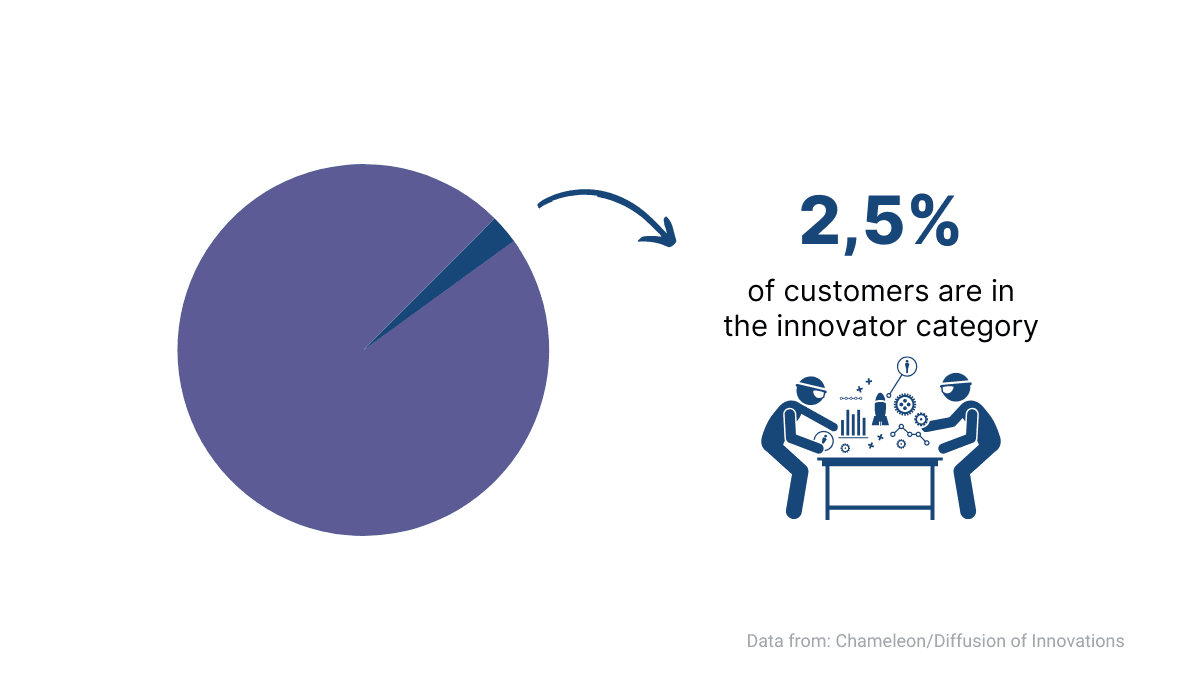
Source: Archbee
Although they represent only a tiny fraction of the customer base, they can be very valuable to any business.
That’s because they’re essentially your eager beta testers.
They are usually technically savvy and love to try out new technologies, so they’re often willing to report bugs and issues, while also coveting the opportunity to be one of the first in line to purchase a product.
Therefore, you can use certain methods to attract innovators and harness their potential.
One of the most effective is designing a pre-launch based on invitations and building hype around it.
That’s what Robinhood, a stock trading and investing app, did when they announced their new Crypto Wallet Beta Program.

Source: Robinhood
As you can see above, they emphasized that this product is groundbreaking for them and will provide features that weren’t there before.
Of course, that is what attracts innovators. Soon, the Robinhood campaign started to attract attention.
For instance, below, you can see a tweet from Doge Whisperer, one of the Twitter profiles specializing in news about Dogecoin and other cryptocurrencies.

Source: Twitter
The invitation program produced results. Robinhood eventually rolled out its crypto wallet to the first 10,000 users who signed up.
That means thousands of customers who can try out the new product before anyone else in the world, thus being one of the pioneers of using a potentially great product.
On the other hand, the company gets new customers willing to test the product and provide feedback.
That’s another characteristic of innovators—they usually love to give feedback, which can be immensely helpful for companies to see what works well and what they need to improve.
You can gather feedback in many ways, but one of the most simple ones is through microsurveys like NPS (Net Promoter Score), which measures how customers feel about your product.

Source: Userpilot
To sum up, although they are the smallest group of adopters, you shouldn’t neglect innovators.
They’re highly motivated to be at the forefront of technological innovations and can provide you with valuable insights into your product, even if it’s still rough around the edges.
Early Adopters
This group of users is another one that adopts a product in the early stages of its lifecycle.
However, there are key differences between early adopters and innovators which you should consider.
Firstly, early adopters are a much larger group than innovators.
In the product adoption curve we’ve mentioned earlier, they occupy a significantly larger share, and comprise 13,5% of adopters.
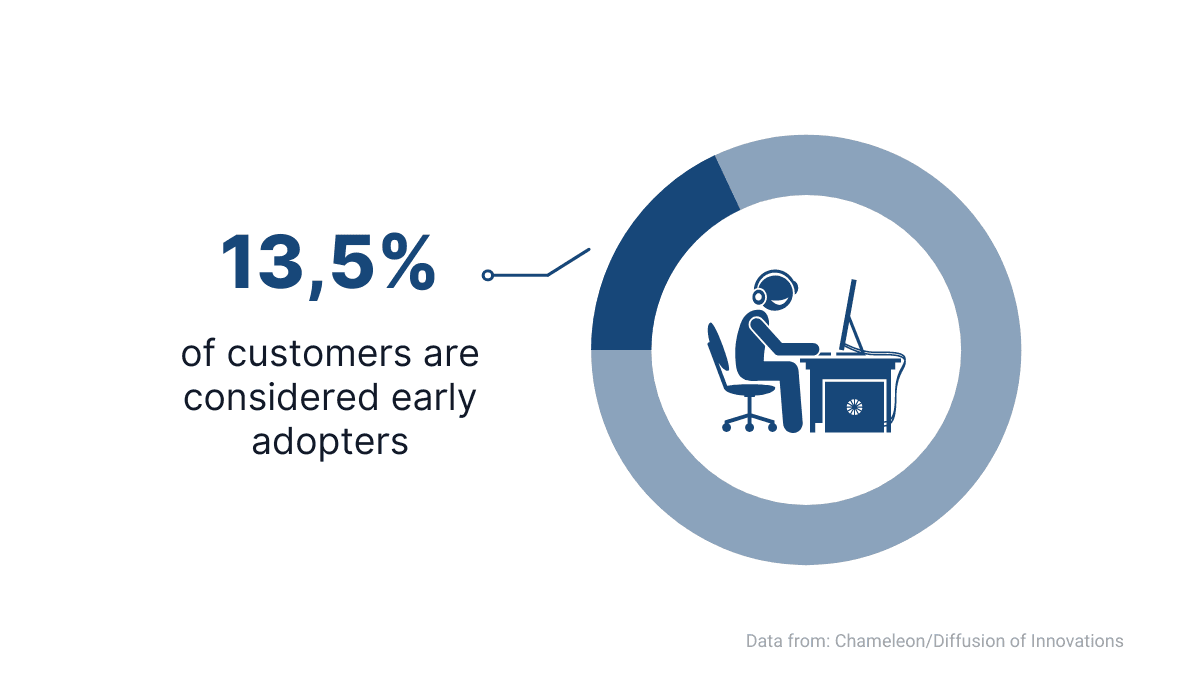
Source: Archbee
That doesn’t make them the most numerous group, but it’s still a considerably larger one than innovators.
They’re also driven by different urges. Curiosity and willingness to be the first to try something new aren’t as crucial to early adopters.
Instead, they have a specific problem to solve or a particular need to fulfill, and that’s what they expect from your product.
In addition to that, they most likely already use a different product for similar purposes, but aren’t entirely satisfied, so they are looking for other options on the market.
That’s why you can attract them by emphasizing how your product solves a particular problem better than your competitors.
For instance, it’s common knowledge that Google is a leading internet search engine. However, there are alternatives like DuckDuckGo.
So, in order to appeal to users, they had to position themselves as a search engine that solves a problem other search engines don’t.
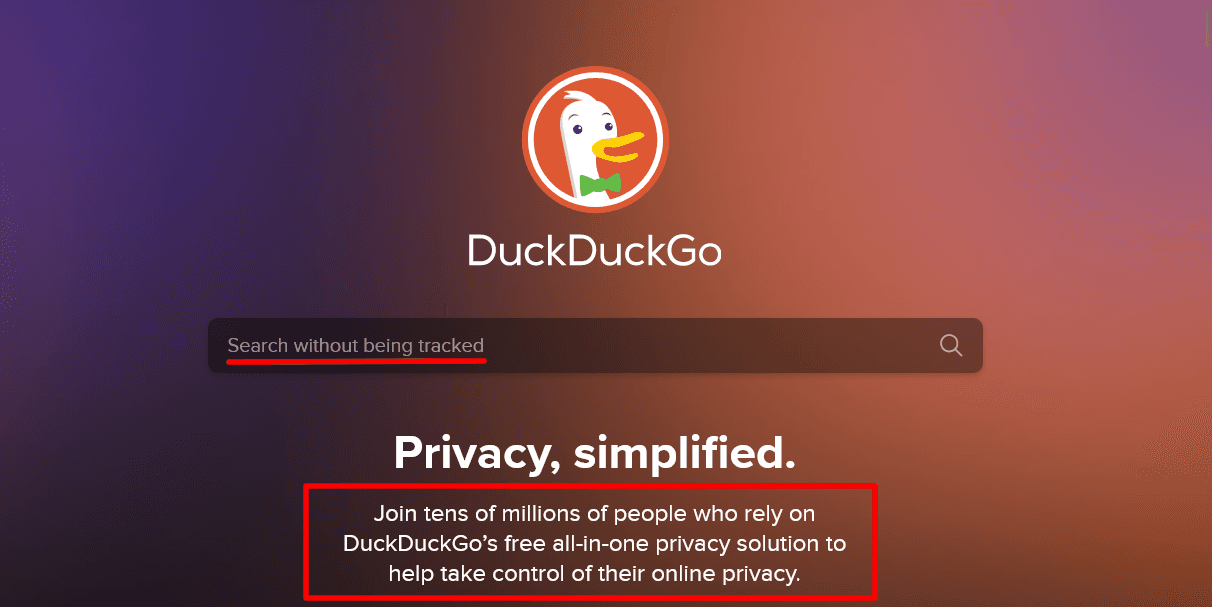
Source: DuckDuckGo
That problem is tracking users’ personal data. As you can see above, DuckDuckGo explicitly doesn’t do that.
In other words, DuckDuckGo is a software product that fulfills a specific need for online privacy.
Users who are looking for a search engine that emphasizes privacy are undoubtedly willing to try it out early.
Another example is Airstory, a writing tool. However, it’s not just a word processor like Google Docs or Word.
Airstory has features tailored for copywriters, journalists, academics, and others who usually do a lot of research for their writing.

Source: Airstory
Positioning your product for a specific audience like that can help you get the users who want a more personalized approach like early adopters do.
This type of user usually needs a little convincing to give your product a chance.
By emphasizing that you have a solution for their problems, you should do enough to nudge them into trying it.
Early Majority
Customers in the early majority category look for the most practical solution for their needs when trying out new products.
As such, they aren’t interested in being the trailblazers or tolerating unpolished software.
That doesn’t mean that they aren’t open to innovations.
However, unlike the innovators or the early adopters, they won’t tolerate many glitches with the product and want a fully finished and functional solution ready to use.
Members of this subset of adopters are a significant factor for every business. If we refer to the product adoption curve, the early majority is one of the two most numerous groups of adopters.
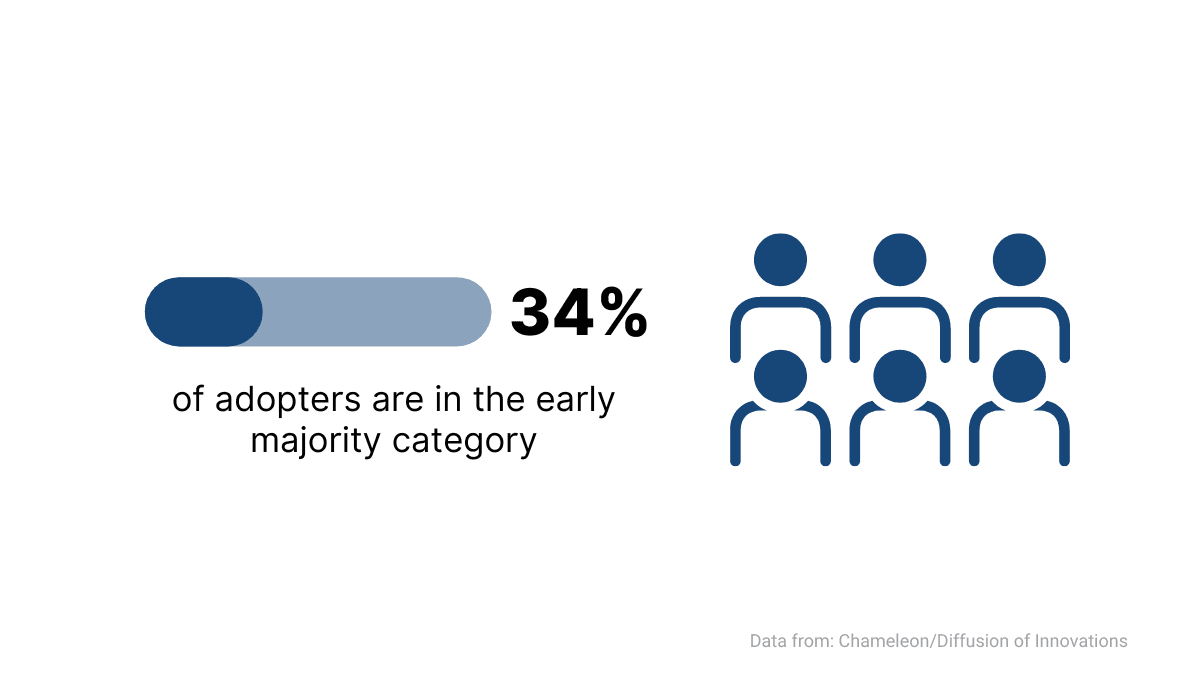
Source: Archbee
However, getting to that third of your users isn’t very straightforward due to the phenomenon known as “the chasm”.
The chasm is the divide between the early adopters and the early majority.

Source: LinkedIn
Geoffrey Moore described it in his book Crossing the Chasm, where he advises how to get your product to the masses—in other words, to the early majority.
As he explains, to reach this subset of adopters, you need to phrase the value proposition you offer your customers to emphasize the pragmatic nature of your product, which is what the early majority wants from their products.
The value proposition has to switch from ‘look at all the great things that can happen’ to ‘look at all the tough problems you can solve if you’re willing to step up to the new technology.
But how can that group of pragmatists know that your product is what they’re looking for? They’ll look for proof from others or, in other words, they will look for testimonials.
Testimonials are one of the most effective ways to show customers that your product works and that they’re not risking anything by adopting it.
You can put testimonials on your product’s website, like the business dashboard software Klipfolio does.

Source: Klipfolio
Social media is also a powerful ally in convincing customers to join the early majority group.
For example, testimonials like the one below about the online registration and payment processing software Regpack can tip the scale in their favor.
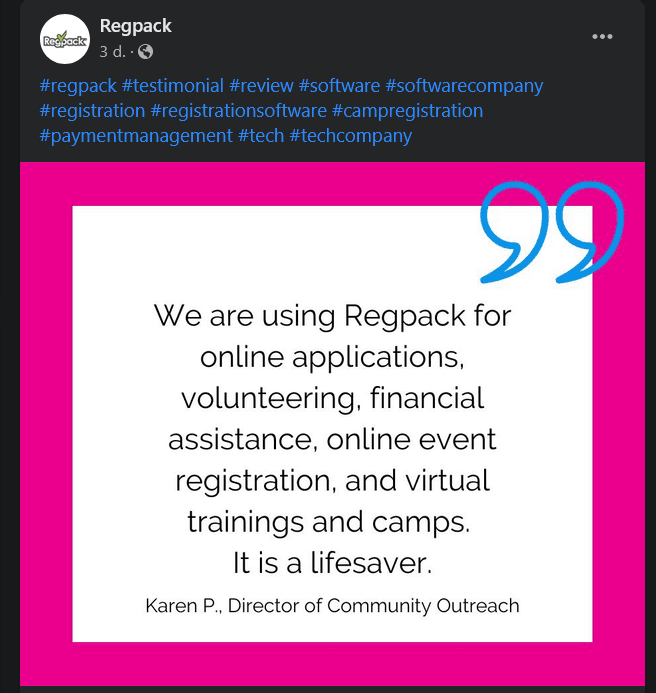
Source: Facebook
The early majority of adopters look for that kind of proof in their research.
They don’t want to use just any product that they stumbled upon. They want practical and tested solutions without wasting their time and money.
Late Majority
The late majority can be challenging to get on board, but they are nevertheless vital for the success of your product.
If you’re wondering why, just like with the early majority, the clue is in the name. According to the product adoption curve, the late majority comprises over a third of all adopters.
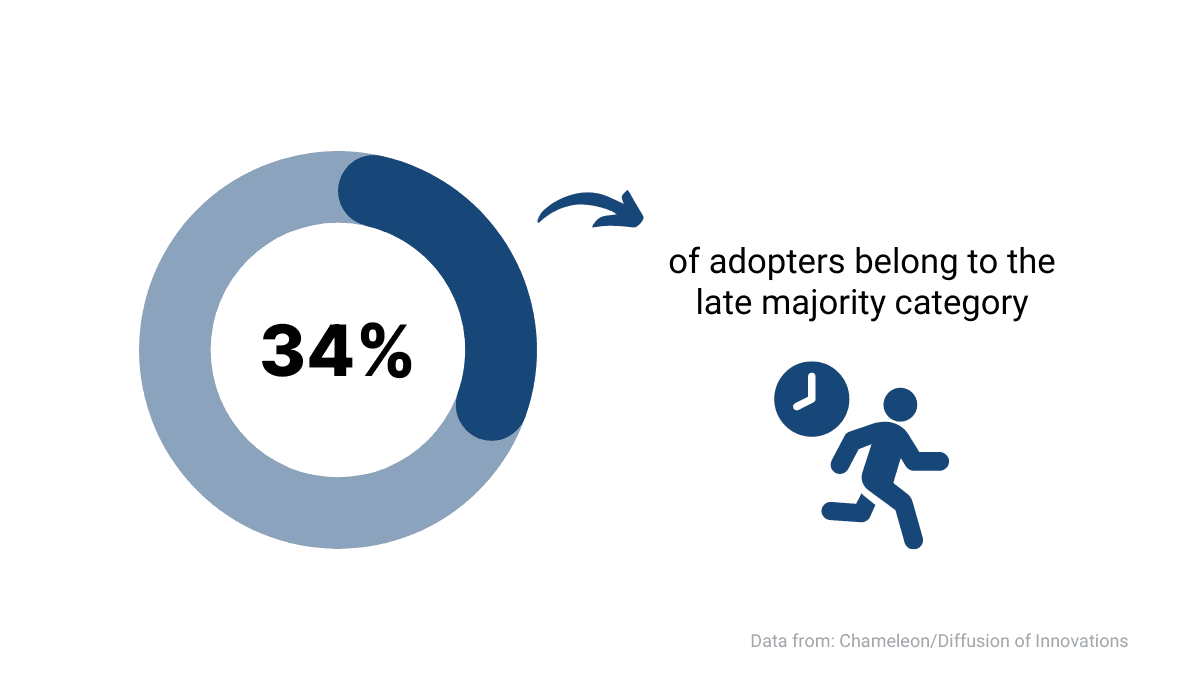
Source: Archbee
Therefore, because of their sheer number, you should put some effort into attracting them.
However, that can be a bit of an undertaking. The late majority adopters are usually reluctant to try out a new product, although they are aware of it.
Regardless of the positives, they are still hesitant to adopt the product, be it because of their unwillingness to make a change or because of financial concerns.
But, there is a motivating factor that can nudge them toward your product—the fear of missing out.
After all, no one wants to be so reluctant to embrace a new solution that everyone around them, and most notably their competition, leaves them in the dust.
That fear of passing on a product that could change their lives for the better, in combination with the possibility of others reaping its benefits, is something you can leverage to attract the late majority.
It can be as simple as listing the companies that use your product, as the project management software Notion does.
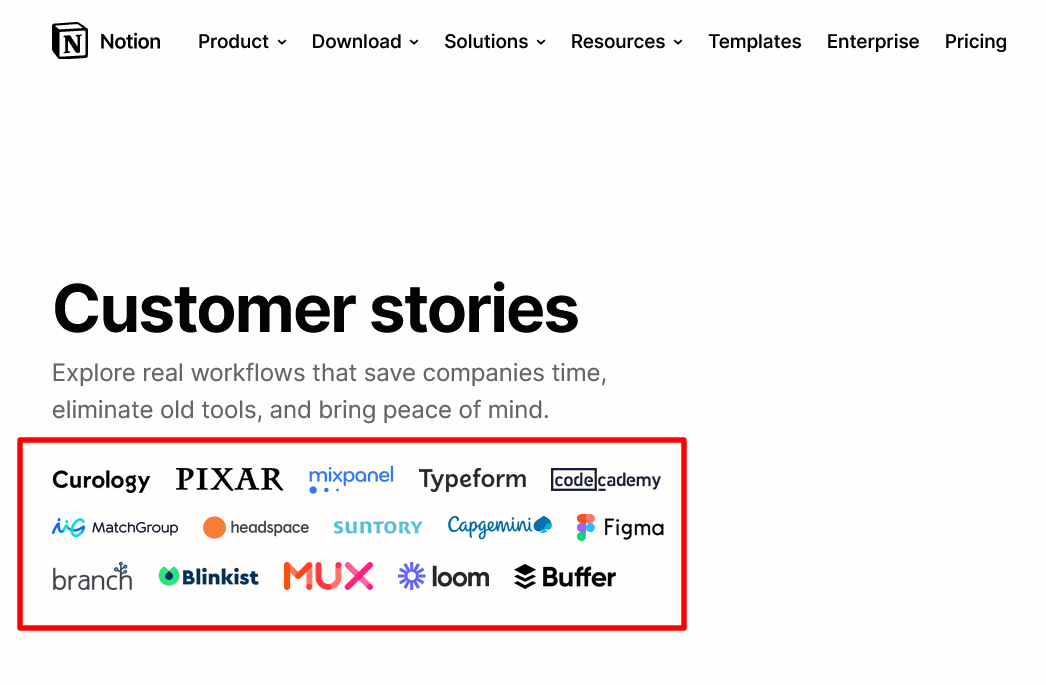
Source: Notion
A list of impressive clients like that can nudge the late majority in the direction of your product, especially if some of their competitors are on the list.
In addition to listing its most well-known customers, Notion also presents users’ experiences with the product.
For example, a case study about how Buffer is using the Notion platform is enriched with insights from Nicole Miller, Buffer’s Senior People Ops Manager.
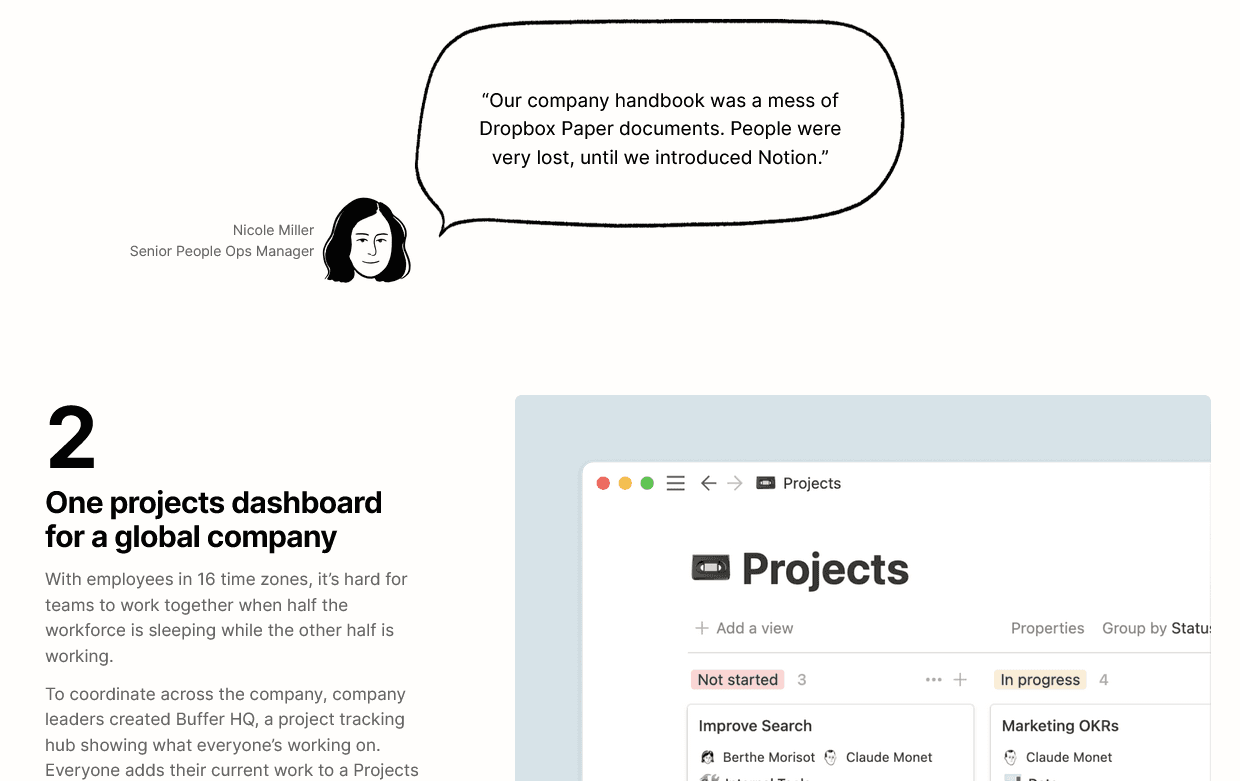
Source: Notion
Because of their systematic approach, case studies like Buffer’s carry more weight than regular testimonials and go a long way in convincing the potential customers that they’re missing out on a great product.
To sum up, seeing how your current prominent clients benefit from the product can be a tipping point for the late majority adopters, who are, because of their number, essential for the success of your product.
Laggards
The last type of adopters we’ll discuss are the laggards. They are also the last ones to adopt a product, but that doesn’t mean you should brush them aside.
Laggards are the most skeptical about adopting new products. They will avoid it as long as possible and are the most difficult to convince of the benefits of a new invention.
However, they still comprise a considerable portion of adopters. The product adoption curve assesses that there are 16% of laggards in the total number of adopters.
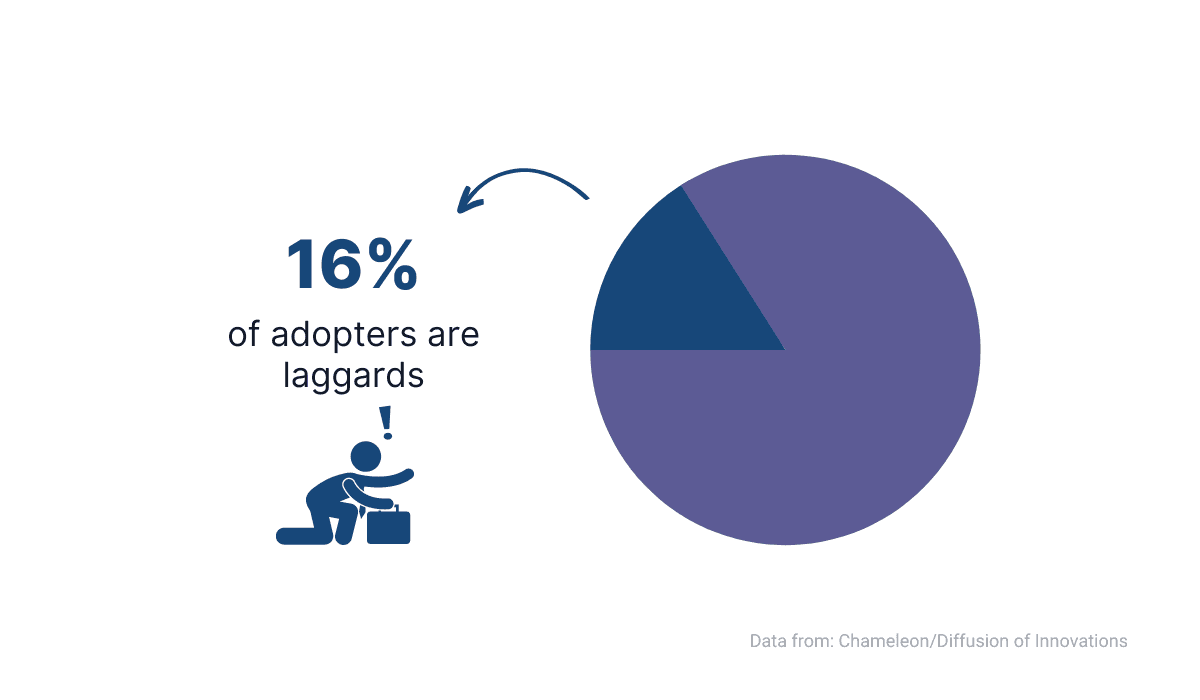
Source: Archbee
Since they are very resistant to change and risk-averse, they’ll adopt a new product only under certain conditions.
One of those conditions is that the product is established as an absolute leader among its competition.
Some laggards won’t adopt a product until they recognize that the alternatives offer much less tangible benefits.
However, that will often mean convincing everyone else around the laggards to use your solution, leaving the laggards no choice but to adopt the product themselves.
For instance, a similar situation happened with Zoom, which became synonymous with video calls in 2020.
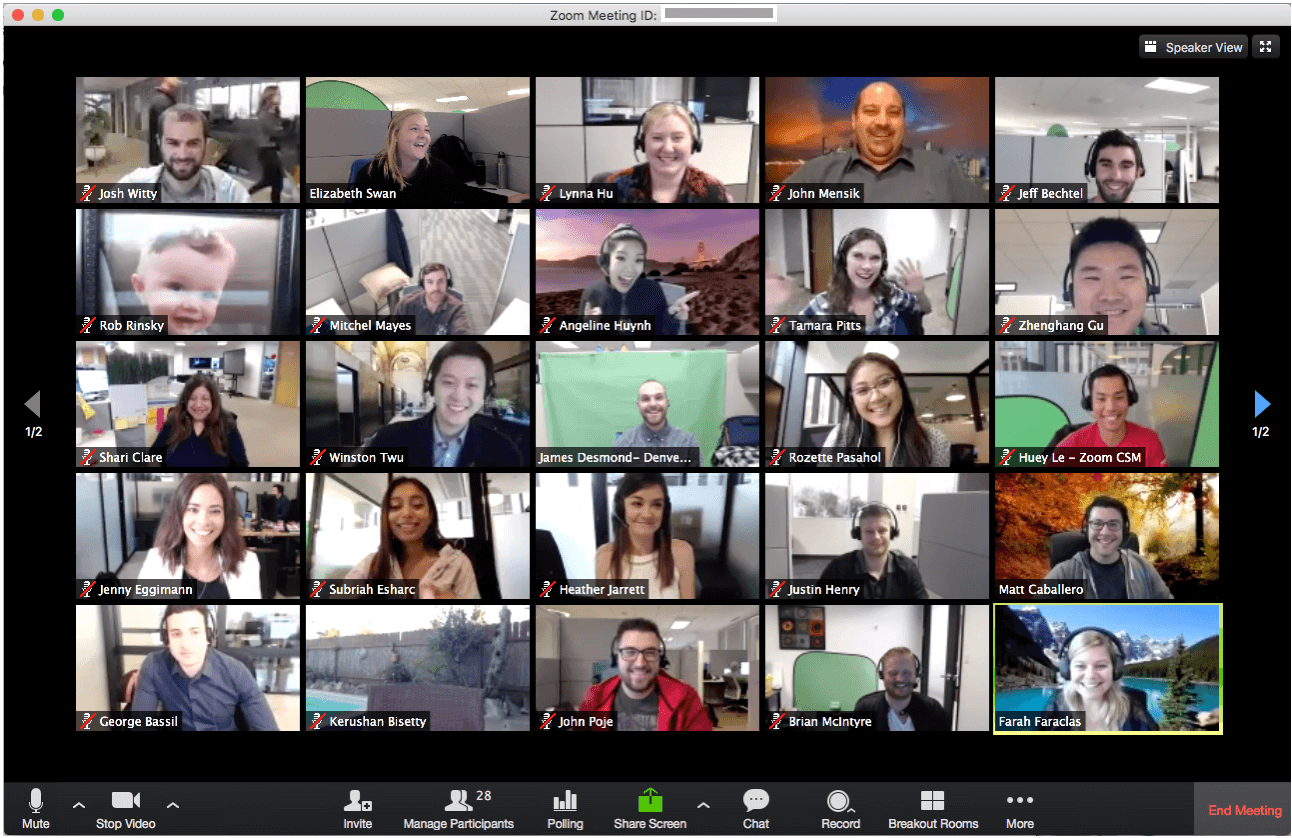
Source: Zoom
The sudden need for video call software was a result of the rise in remote work brought about by the COVID-19 pandemic.
Zoom soon established itself as the product of choice for many people and companies.
According to TrustRadius, in April 2020, Zoom held half of the whole market share of video conferencing tools.
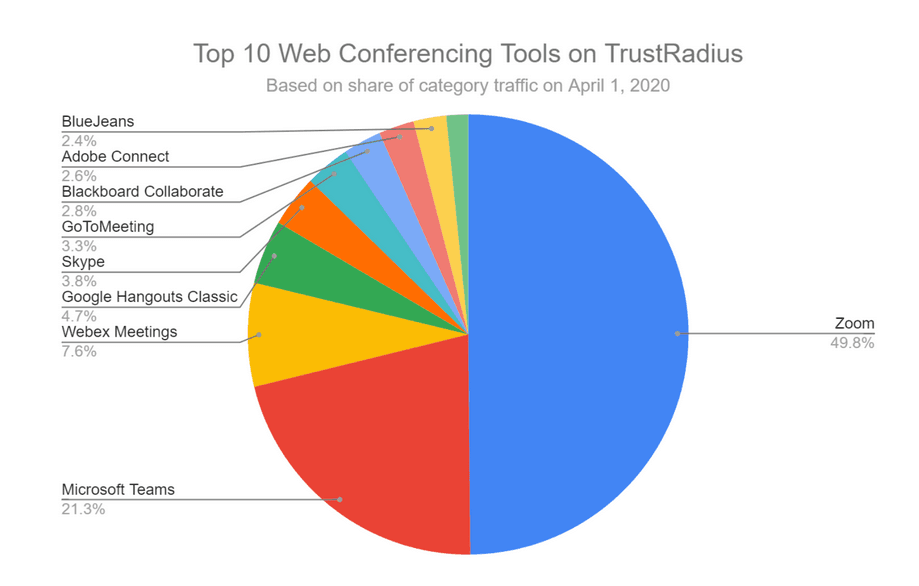
Source: TrustRadius
The trend continued in 2021 when Zoom also crushed the competition by holding 50% of the market.
That meant that many laggards didn’t have a choice but to adopt Zoom—there was a very high chance that their company would use it, as well as their friends and family.
Of course, establishing your product as the leader in the field is no easy task and depends on many factors, some of which aren’t under your control.
However, similarly to your approach to the late majority, when targeting laggards, you can always emphasize the advantages of your product over the competition when you have the chance.
For instance, take a look at the graphic on Archbee’s website. It’s a table comparing features between Archbee and Notion, a tool we mentioned earlier.

Source: Archbee
As you can see, Archbee has many more features suited to creating, maintaining, and publishing product documentation.
Highlighting your product’s advantages over its competitors can convince laggards that no alternative is good enough for their needs, which can entice them to adopt your product.
Conclusion
Understanding various types of adopters is crucial for getting your product to more people.
Innovators, early adopters, early majority, late majority, and laggards are all driven by different goals and motivations while looking for a product.
They don’t have the same needs, nor do they respond to the same methods of attracting customers.
Therefore, you should use a variety of approaches to appeal to each of those types. Each group is worth the effort and has distinct benefits for a company.
We hope that this article will help you utilize them.
Frequently Asked Questions
It’s a model that shows how different groups of customers adopt a product over time—innovators, early adopters, early majority, late majority, and laggards. Each group has distinct motivations, risk tolerance, and expectations. Understanding the curve helps you tailor messaging, features, onboarding, and proof points to move from early traction to mainstream adoption and plan your go-to-market more effectively.



